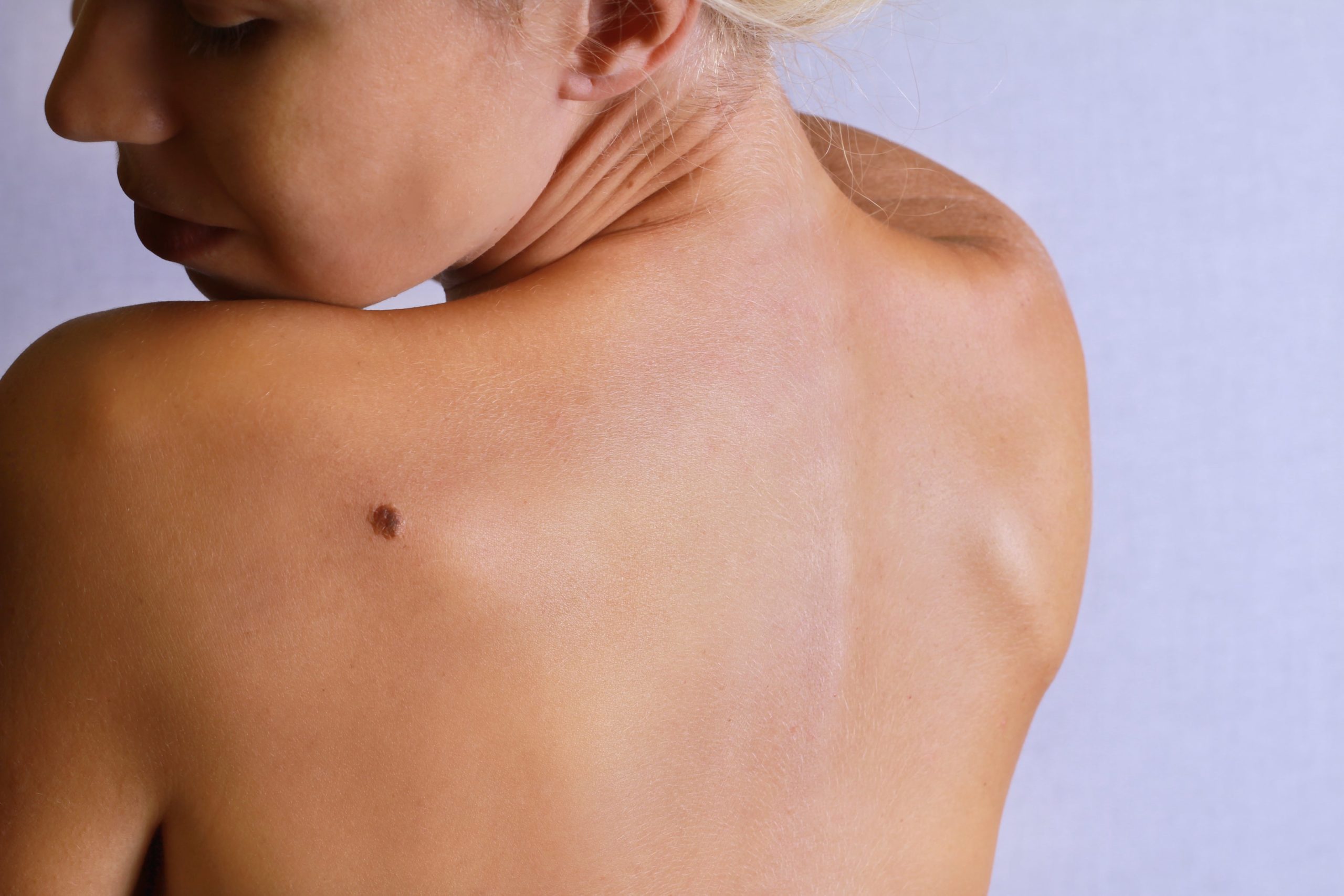Skin cancer is one of the most common cancers in the world. The good news is that skin cancer can be detected with a skin cancer screening. The American Academy of Dermatology encourages people to perform regular skin self-exams and schedule an appointment with a qualified dermatologist if they come across any skin cancer warning signs.
Dermatologists are trained to perform skin cancer screenings. If you suspect that you could benefit from a skin cancer check, read on to find everything you need to know about skin cancer screenings.
What Are Skin Cancer Screening Exams?
How is skin cancer detected? This is where a skin cancer screening or skin cancer check comes in. Skin cancer screening exams involve a visual inspection of the skin to identify signs of cancer. The examination can be performed by you or ideally by a board-certified dermatologist.
It’s important to keep in mind that screening doesn’t necessarily diagnose cancer. However, if the screening reveals anything of concern, further testing can be performed. Typically, a biopsy is required to diagnose cancer. To ensure the best outcome, skin cancer screening exams are recommended to be done as early as possible, while the chance of healing is still high. Early screenings can help detect skin cancer before it spreads.
Signs You’re at Risk and Need a Skin Cancer Screening
When should you visit a dermatologist for a skin check? Generally speaking, it never hurts to schedule annual routine exams, especially for those who are at high risk for skin cancer. You’re at increased risk for skin cancer if the following applies:
- History of skin cancer, unusual moles, or skin lesions
- Presence of a high number of moles/irregular-shaped moles
- Fair skin or freckles, red or blond hair, blue, green, or light-colored eyes
- Prolonged use of tanning beds
- Long-term sun exposure or history of blistering sunburns
- Severe sun damage
- Have a first-degree family member who has a had skin cancer
- Recipient of an organ transplant
- Weakened or suppressed immune system
A skin cancer screening may be necessary if you answered yes to any of these risk factors. That said, it’s best to consult your provider about how often you should get screened, whether it’s self-done or at the provider’s office. Your dermatologist will assess your risk level for skin cancer before providing personalized advice.
Besides the risks mentioned above, your dermatologist will also consider other factors, such as your age. According to the Centers for Disease Control and Prevention (CDC), most skin cancer diagnoses occur in people over the age of 65. Additionally, although skin cancer can affect people of all skin tones, it’s less common in people of color compared to Caucasians. Still, no matter your skin tone, you are encouraged to make an appointment with a dermatologist immediately if you spot any red flags on your skin.
What To Expect During a Skin Cancer Screening
When it comes to how skin cancer is detected, keep in mind that detection typically begins at home, followed by a medical diagnosis by your dermatologist.
How Is Skin Cancer Detected at Home?
If you’re self-examining, it’s essential to check every area of your body, from your head to your toes. Make sure that you have plenty of good lighting and use a full-length mirror and a handheld mirror to ensure that you can visually inspect all areas of your body. The areas to check include: face, neck, stomach, under the breasts, back, buttocks, genitals, sides, forearms, hands, toes, and more.
What will you be looking for during a skin check? In most cases, you’ll be keeping an eye out for irregular-shaped moles which can easily be seen by the naked eye. To make the at-home mole screening more effective, experts have developed the “ABCDE” rule:
- Asymmetry – The mole has an odd shape, meaning the two halves don’t match.
- Border – The mole has a sore or irregular edge that may or may not bleed.
- Color – The mole has an uneven color.
- Diameter – The mole is larger than a pea or pencil eraser.
- Evolve – Something has changed about the mole’s size, shape, or color.
During your mole screening, you should also pay attention to any mole that’s sore, crusty, painful to the touch, oozes, bleeds, or doesn’t heal as expected. If your mole screening uncovers a cause for concern, contact a Top Alliance affiliated dermatologist as soon as possible.
How Is Skin Cancer Detected and Diagnosed by Your Dermatologist?
If you visit your dermatologist for a skin cancer check or mole screening, they’ll also perform a complete body examination. In addition, your dermatologist will check for the “ABCDEs,” which indicate the possibility of skin cancer. The skin cancer check generally takes approximately 10 to 15 minutes unless the doctor needs more time to investigate something out of the ordinary.
You’ll typically be required to wear a medical gown if the skin check is in a private setting. However, you may be able to keep your clothes if the screening is limited to exposed areas, such as the face, neck, and hands. During the inspection, be prepared to answer a few questions regarding the nature of any moles you might have.
What Happens If the Doctor Finds Something?
If your dermatologist finds a potentially problematic mole, they’ll most likely take a sample and send it to a lab. The mole biopsy will then show whether there’s skin cancer. If cancer cells are detected, your dermatologist will outline your treatment options and the steps you need to take.
What Else Do I Need to Know for My Skin Cancer Screening?
Below, you’ll find more helpful information and tips to better understand skin cancer screenings:
- There are no risks to having a skin exam, whether you’re screening at home or scheduling an appointment with your dermatologist. Additionally, there are no special preparations when visiting your provider other than not wearing makeup and leaving your hair loose.
- Most skin cancers fall into one of three categories: basal cell carcinoma, squamous cell carcinoma, or melanoma. Basal cell carcinoma is the most prevalent form of cancer but grows slowly and stays in situ. Squamous cell carcinoma is the second most common skin cancer, and it can spread to deeper layers of the skin. Melanoma is the rarest skin cancer, yet the most aggressive and dangerous because it spreads quickly.
- If you’re committed to regular skin cancer screenings, it’s also in your best interest to lead a lifestyle that reduces the risk of skin cancer. This involves using sunscreen regularly and avoiding outdoor sunbathing or artificial tanning treatments.
Schedule a Consultation with a TopLine MD Alliance Affiliated Dermatologist
The American Academy of Dermatology estimates that approximately 9,500 people in the U.S. are diagnosed with skin cancer every day. Fortunately, most skin cancers are highly treatable, especially if the cancer is detected early. Adopting a proactive approach is one of the most crucial elements of your skin healthcare routine.
You can find a highly qualified dermatologist affiliated with the TopLine MD Alliance to perform a skin cancer screening. All you have to do is search our community of medical specialists and contact us today to learn more about how we can help you.
The TopLine MD Alliance is an association of independent physicians and medical practice groups who are committed to providing a higher standard of healthcare services. The members of the TopLine MD Alliance have no legal or financial relationship with one another. The TopLine MD Alliance brand has no formal corporate, financial or legal ties to any of the affiliated physicians or practice groups.




